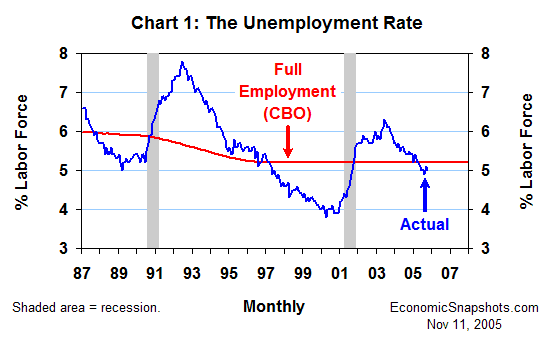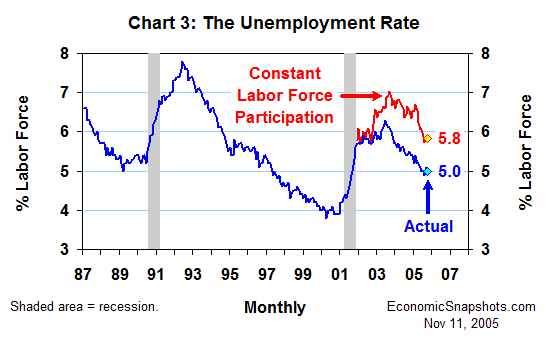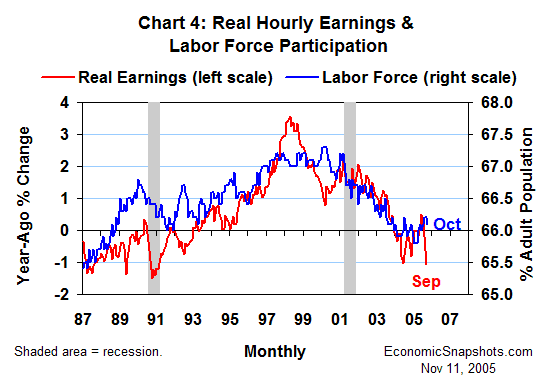
| Back to Index |
November 11, 2005 – The U.S. unemployment rate has been slightly below its full employment level for the last 6 months, using the Congressional Budget Office’s (CBO) estimates of full employment (Chart 1). This suggests a relatively tight labor supply – and a relatively high risk of wage inflation. Given this expansion’s poor track record for job creation, it’s natural to wonder why the economy seems to have so few spare workers.

At least part of the answer lies in the unusually low labor force participation rate (the percentage of the adult, civilian population that is either employed or actively seeking work).
As a rule, we expect the labor force participation rate to fall during recessions (when jobs are scarce) and to rise during expansions (when jobs are plentiful). In this cycle, the labor force participation rate fell during the 2001 recession, as expected. Then, it continued on a declining trend for another 38 months (Chart 2).

At 66.1% in October, the labor force participation rate had risen by 0.3 percentage points (pp) compared to the expansion low of 65.8% that prevailed from January through March this year. Nevertheless, it was still 0.6 pp below its November 2001 level of 66.7%. (November 2001 was the trough of the last recession.)
If the labor force participation rate had remained at its November 2001 level, the October unemployment rate would have been 5.8% – nearly a percentage point higher (Chart 3).

We are due for a large structural decline in the labor force participation rate over the next few decades, as the Baby Boom cohorts retire from the labor force. However, this process hasn’t begun just yet. Instead, recent years’ reductions in the labor force participation rate are largely attributable to women of prime working ages (25 to 44).[1]
If these low participation rates are a simple cyclical reaction to unusually weak labor demand, then these missing job hunters are likely to join the labor force quickly when conditions improve. Thus, if this is a cyclical issue, there is a case to be made that the unemployment rate is currently understating the economy’s untapped labor supply.
Coming full circle, exceptionally poor earnings prospects may be a key factor keeping potential job seekers on the sidelines (Chart 4). The twelve-month gains in real average hourly earnings have been roughly zero or less for the last two years.

Suzanne Rizzo